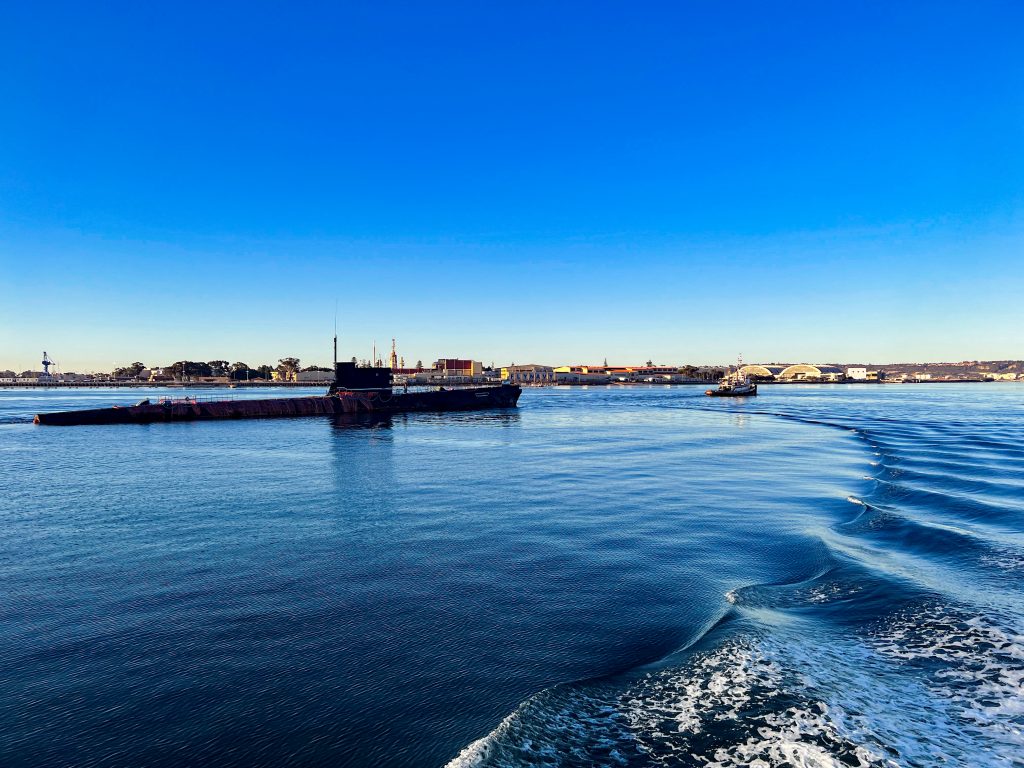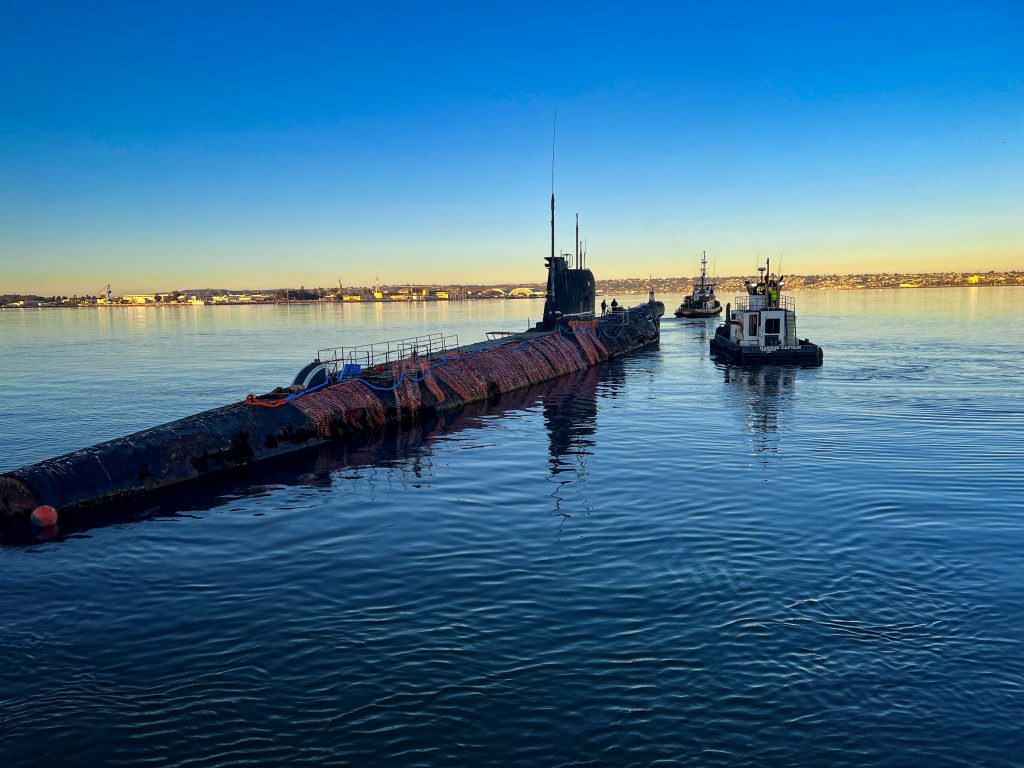Fortunately, this was not an act of war, it was to be the final voyage of the B-39 Project 641 Class Soviet era submarine, dubbed “Foxtrot” by NATO. The sub had been part of the San Diego Maritime Museum’s display fleet since 2005. On this clear February morning, the old B-39 was being towed by the Pacific Maritime Group tug Blarney, itself a re-purposed veteran of the US Navy. There was something both nostalgic and poetic to see the beautifully restored and modernized US Navy tugboat taking an old nemesis to her final port of call and ultimate demise. The voyage of the B-39 that took her from the Cold War to the scrap yard was a long one. Time was not kind and took a harsh toll as the years went by. Onlookers that chilly morning noted the rusted outer hull, peeling paint and slight list as the retired sub trailed obediently along behind the Blarney like a tired old hound.

In her day she was a predator to reckon with. At nearly 300 feet long, armed with 22 torpedoes and 10 torpedo tubes, B-39 was among the largest non-nuclear submarines in the Soviet navy. Her crew of 78 specialized in prowling the seas from her commissioning in the 70’s into the 90’s. sometimes referred to as “Black Widow” or “Cobra”, the danger was real and a constant fact of life at sea for her adversaries.
At the end of her active career, B-39 eventually found her way to the San Diego Maritime Museum, where visitors could get a first-hand experience of what life at nearly 1,000 under water was like. Unfortunately, the cost and effort to maintain the old vessel became prohibitive. Plans were made to dispose of the submarine.
Pacific Maritime Group and the San Diego Maritime Museum are both San Diego locals, with deep ties to the Maritime industry, local community, and to one another. PMG has helped with many Museum vessels, including the sailings and dry-dockings of the Star of India, the launching of the San Salvador, and many other circumstances calling for experience and care.
The B-39 disposal presented a long list of challenges. The shockingly poor outward appearance of the vessel seemed to indicate a potential for capsizing or sinking. US Coast Guard Sector San Diego required assurances that neither would occur!
San Diego Maritime Museum entrusted the Project Management from cradle to grave to Pacific Maritime Group. Professional surveys, stability tests and detailed tow plans all had to be prepared and Coast Guard approved. Special rigging was designed and installed. A containment “fence” was wrapped around portions of the outer hull to prevent debris from falling off during transit. Many, many meetings guided the process through to that final February morning. The Blarney, along with two PMG assist tugs Harbor Captain and Contender arrived, moorings were cast-off and the B-39 slipped away to sea for one final voyage. The tow to Ensenada was uneventful, except for the nature of the voyage itself. With a kind assist from local tugs in Ensenada, the old submarine made an unceremonious landing for the last time.
Meanwhile, back in San Diego, PMG completed its assist work by providing a floating crane to remove the old anchor and chain moorings from the bottom of the Bay.
The scrap metal value of the B-39 lies in her internal pressure hull, which is made of high quality steel, in excellent condition for recycling, which contributed to offsetting the costs of disposal. Pacific Maritime Group proudly donated in-kind services and expertise at and below cost as part of its commitment to help support the San Diego Maritime Museum’s Mission.
Thus completed the full life-cycle of the Foxtrot Submarine B-39.
By Steve Frailey, Pacific Maritime Group




